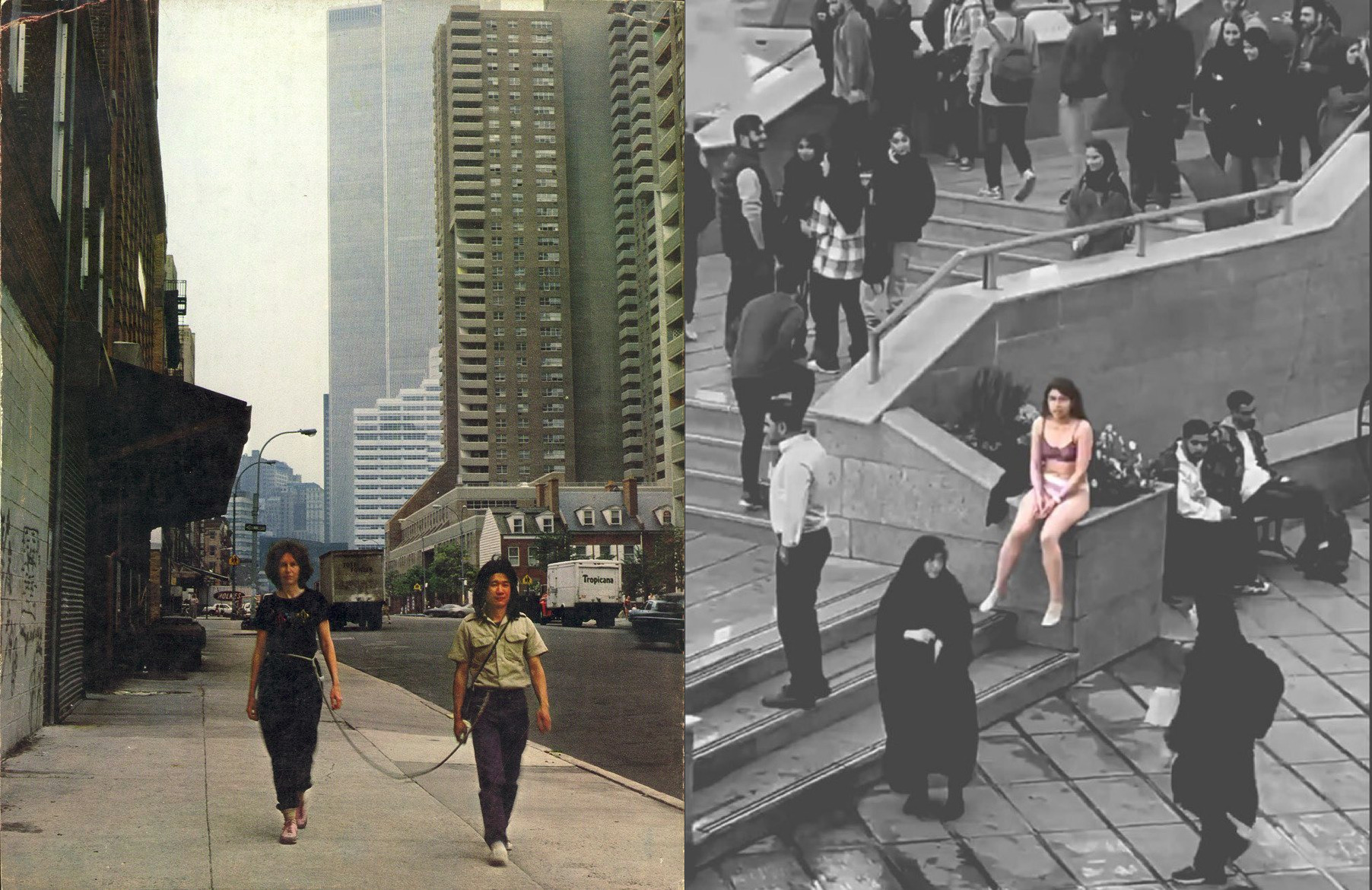Life in Iran under a totalitarian regime is a relentless performance, a dance of endurance. It’s like Tehching Hsieh and Linda Montano’s “Art/Life: One Year Performance 1983–1984,” where they tied themselves together by an 8-foot rope, day after day. The rope held them close but kept them apart, bound by rules but divided by the invisible walls we all know too well. In Iran, the rope is everywhere—stretching over homes, cities, souls—tightening and loosening, but never letting go. It wraps around every man, woman, and child, unseen but heavy.
The rope in that art piece was simple but absolute. Hsieh and Montano moved, spoke, breathed, each step determined by that binding line. It told them, “You may live, but not too freely.” And so it is with life under a watchful regime. The government’s rules say, “You may speak, but only these words. You may walk, but only here.” There is a script, and all must perform it—an act repeated so many times that even breathing becomes part of the show. It is a dance we do out of habit, out of fear.
But in that forced closeness, there’s a strange loneliness. Hsieh and Montano could not touch each other. They shared everything except themselves. People in Iran know this feeling. You walk in crowded streets, surrounded by faces that know your struggle but cannot meet your eye. The public space is full, but each soul is alone, locked in its own careful silence. Trust is a luxury few can afford. The government plays a double game, creating a sense of shared purpose while keeping everyone apart. Just like in the performance, we move together but live alone.
Endurance becomes an art form. Every day is a test, a performance that demands patience and discipline. The artists had their rope; we have our invisible chains. The ropes are our censored thoughts, our muted songs, our quiet rage. We learn to smile with our eyes when our mouths cannot risk the truth. The act of surviving becomes a form of rebellion, a way to say, “I am still here, no matter how tightly you tie me.”
Hsieh and Montano’s piece was not just an art experiment; it was a lesson in boundaries. They had to find ways to be themselves while being bound to another, never forgetting the rope was there, never able to pretend it wasn’t. In Iran, the rope is the state’s hand on your shoulder, pressing, guiding, reminding you who is in charge. You learn to keep parts of yourself hidden, locked away where no rope can reach. You become an artist of small rebellions: a whispered poem, a daring thought, a glance that says, “I know, I see you.”
Freedom, in such a life, becomes an idea, a memory, a wish. It’s like the rope telling Hsieh and Montano, “You may live, but this is your space.” In Iran, freedom is measured in steps, words, glances. We become careful, watching, calculating how far we can go before the rope pulls us back. But even in this, there is art—an art made of surviving, hoping, resisting quietly. Art is not a choice; it’s a way to breathe.
Art and life blur together in such a place. The rope isn’t just a prop; it’s reality. The regime’s rules press against your skin, shaping your days. Yet, like the artists, we learn to adapt, to create moments where we are more than just bodies tied to an unyielding force. There is a strength in that, a lesson in how far we can stretch without breaking.
And like Hsieh and Montano, the people of Iran carry on, bound but not defeated, finding ways to move, to speak, to live. The performance continues, day after day, and in each act of survival, there is the quiet defiance that whispers, “I am still more than what you think.”










